16 games, Nov. 28, Dec. 1/2, 2024
566 +2/232\\
Week 13: 84 touchdowns, 5 ATDs
SF@BUF: Are you Joshing me?
Week 13’s most discussed, most replayed highlight was Josh Allen’s pass to Amari Cooper and Allen’s subsequent lateral catch/sideline lunge in the snow.
It looked exciting and dramatic; Allen was celebrated for his improvisational ingenuity; and judged by existing rules, it was rightly called a touchdown. Yet the entire sequence illustrated how utterly daffy those existing rules are.
Allen never touched the end zone. He used the ball to tag the pylon — which is positioned entirely out of bounds — before he crashed to the turf and the ball, in his hand, landed a foot or more out of bounds. Why in the world do fans accept such a play as a touchdown?
You cannot find the phrase “goal line extended” in the NFL rulebook, but you sometimes hear it mentioned after pylon pokes such as Allen’s. This site’s lengthy dissertation on pylons quotes the rulebook (Rule 11, Section 2, Article 1, points b and c) which certifies a gripped ball can pass over or inside a pylon, or tap a pylon, and the result is an instant six points. It is a stupefying ruling.
Why should the goal line be “extended” simply because a 4-inch-square foam pylon stands on the sideline, outside the field of play? At that point the goal line becomes a carnival barker’s arcade game. Hit the pylon, but instead of a stuffed llama, you get handed six points. The easy way. That just seems crazy. Hocus Bogus Rating: 5
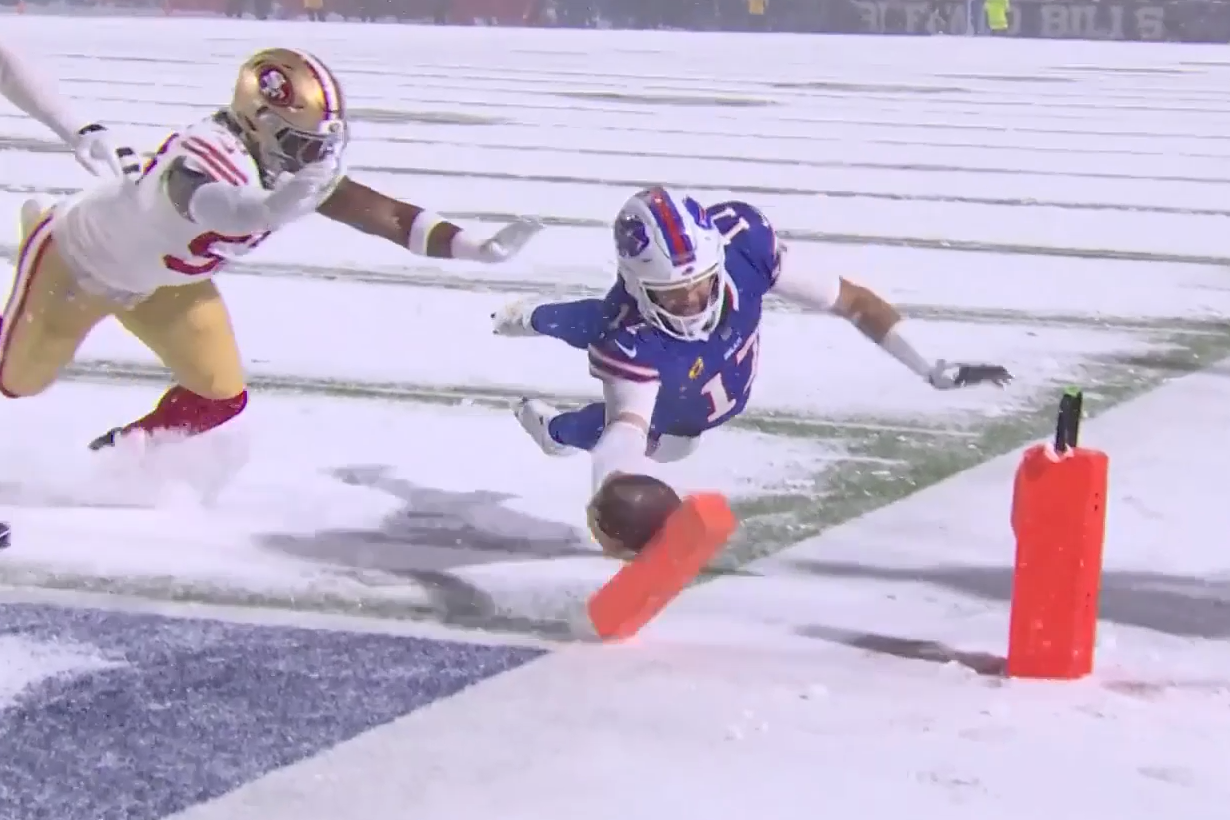
Video and images: NBC Sports
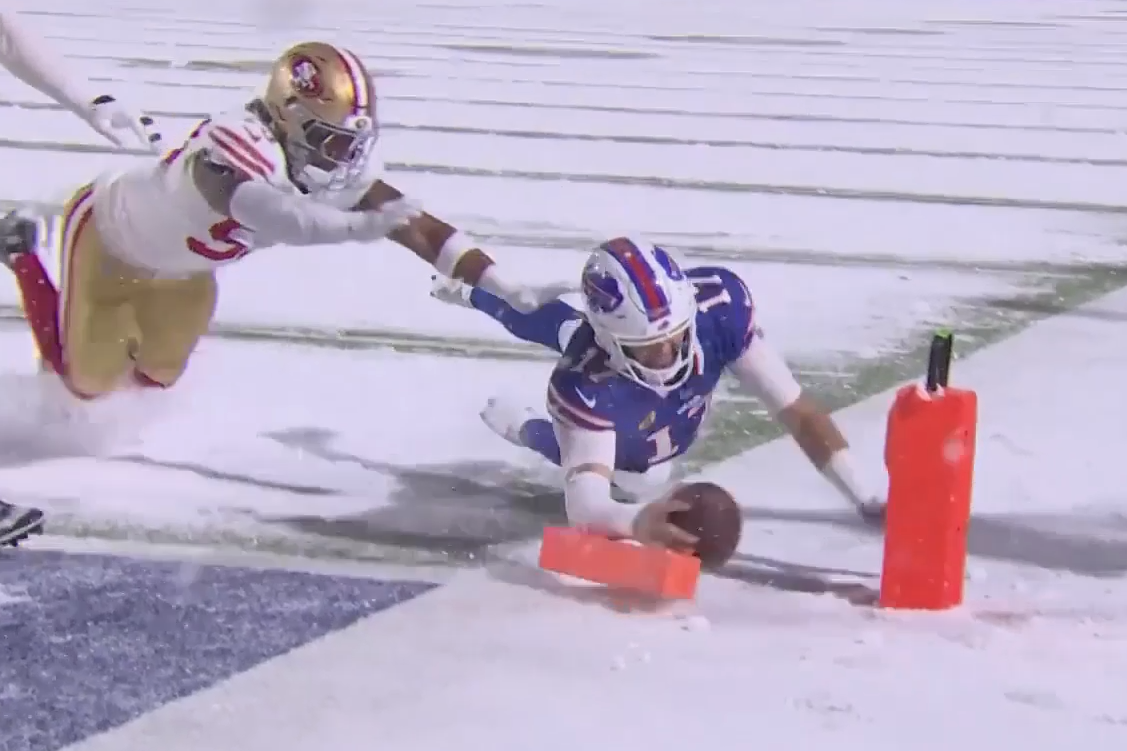
IND@NE: Doing the wave
Here is a move by Indianapolis running back Jonathon Taylor that is just as wacky as Allen’s maneuver above, and somehow he, too, gets credit for six points despite never touching, or even getting seriously close, to the end zone.
CBS brings in its rules analyst, the gentlemanly Gene Steratore, to explain that rules are rules, and no matter how absurd this pylon wave looks, it’s good for six points. Clearly football fans have become hypnotized into believing that no-touch touchdowns are legit. We think fans should snap out of it. Rating: 5
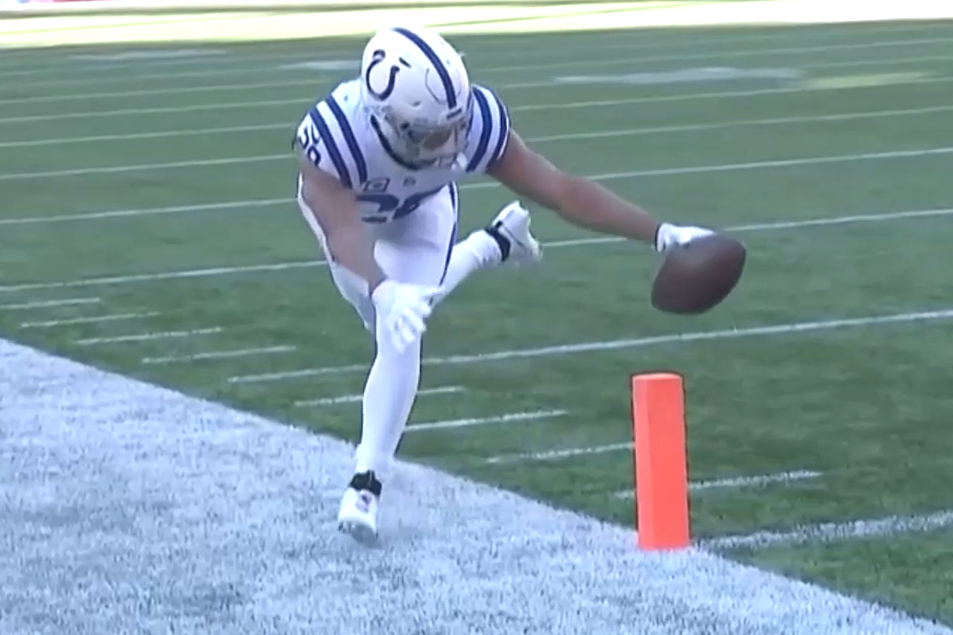
Video and image: CBS Sports
TB@CAR: Just passing by
Bryce Young’s path to the end zone is cut off by Tampa Bay safety Antoine Winfield, Sr., but it doesn’t matter.
All it takes is a magician’s wave at the pylon and, poof, Young can trot off the field with six points. Such a ruling just doesn’t seem fair to the defense. Rating: 4.5
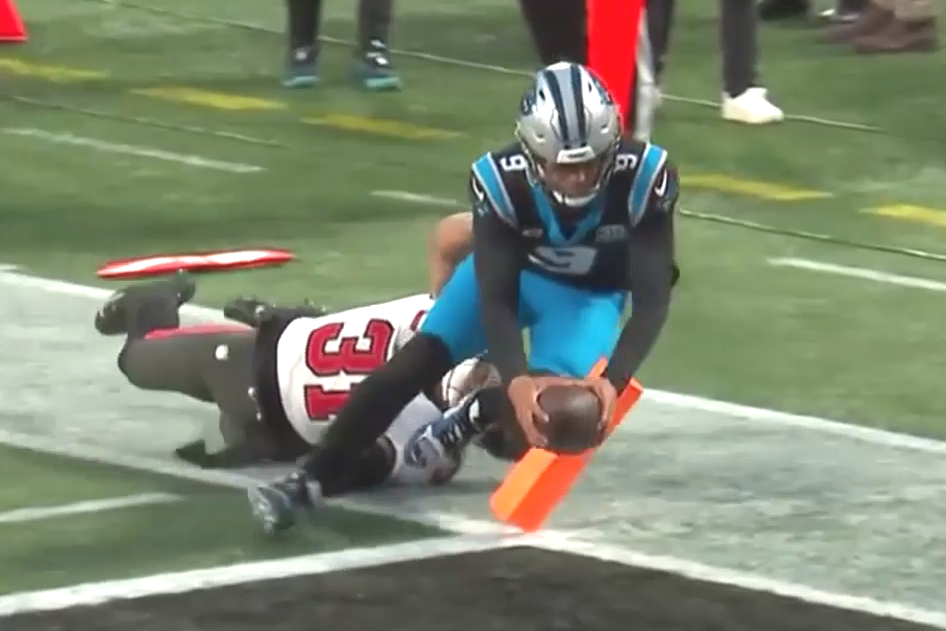
Video and images: Fox Sports
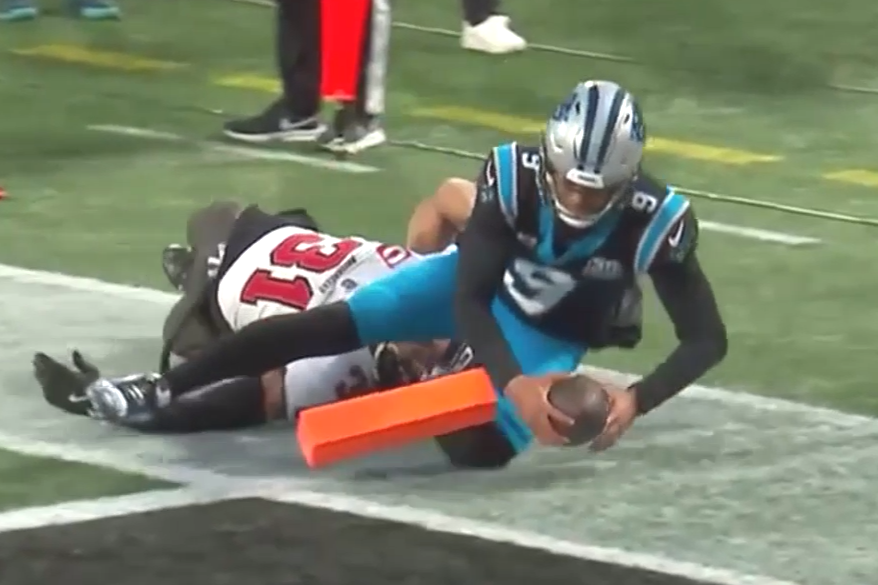
LV@KC: Not quite in, just out
To earn a touchdown, we believe a ball carrier must 1) bring the ball to or beyond the goal line and 2) make first contact with the ground while touching some portion, however small, of the end zone. Here the Raiders’ Tre Turner has his knees down in front of the goal line and his left elbow is out of bounds.
True, he breaks the plane, so it’s a TD in 2024 terms, but he fails to make proper contact with the designated scoring area. Good effort by the defense. We say no score.
In real time, it’s easy to think Turner is in. But if our preferred rule was in place, replay cameras would put Las Vegas inside the 1, first and goal. Rating: 2
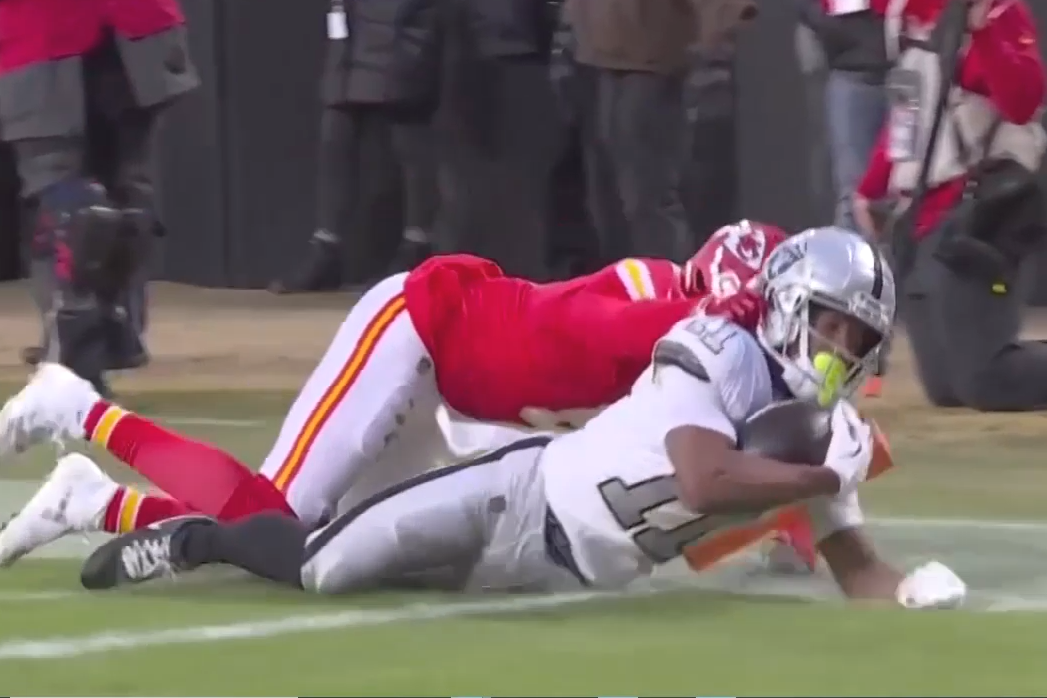
Video and image: Amazon Prime
NYG@DAL: One step over the line
This is a simple corner cut by the Giants’ Drew Lock. He planted his left foot in front of the goal line, then stepped out of bounds with his right. He felt no need to turn upfield and try to actually contact the end zone. The break-the-plane rule makes life for a ball carrier so much simpler. Rating: 2
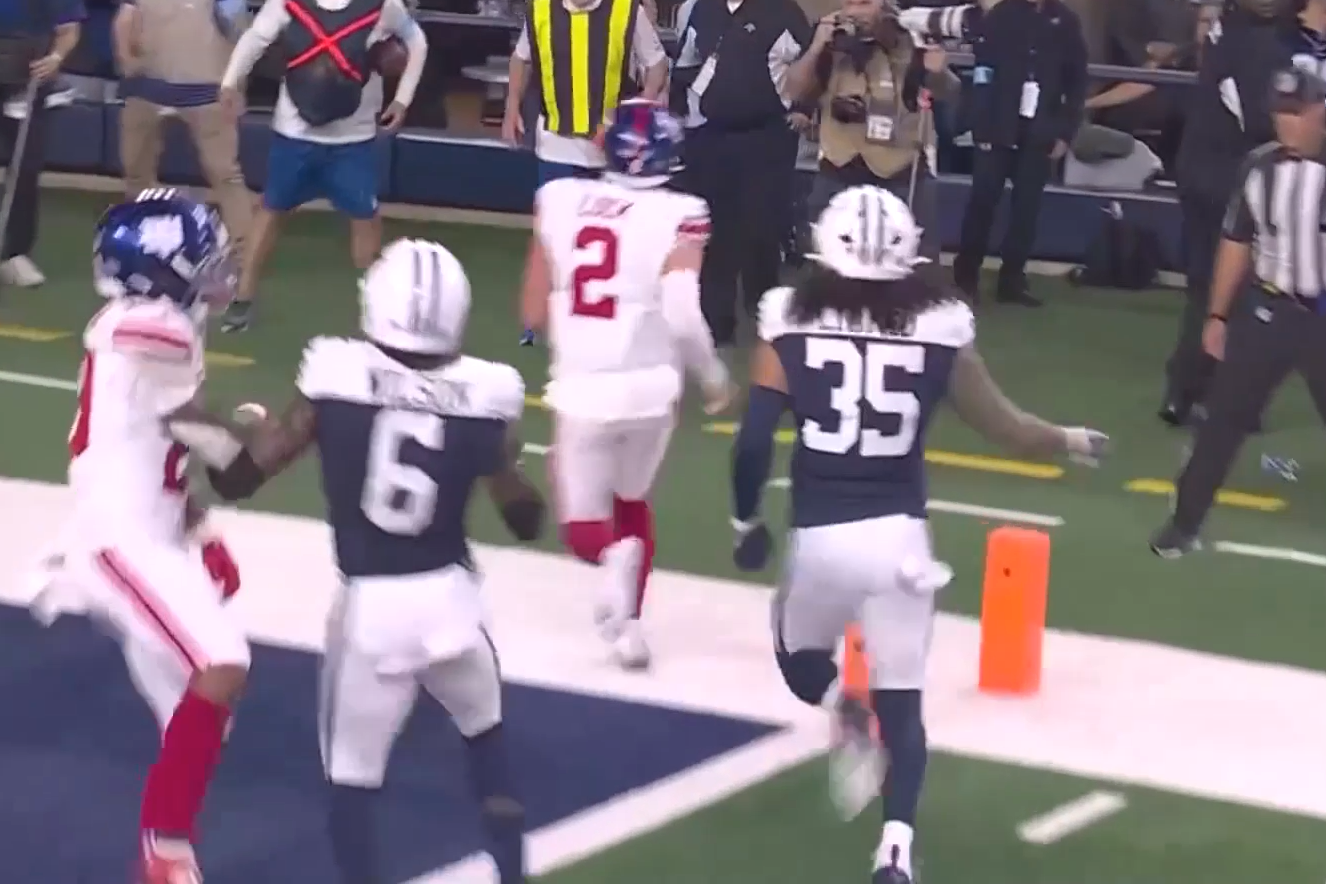
Video and image: Fox Sports
College: How? Why?
Some break-the-plane touchdowns are more baffling than others. Here Texas QB Arch Manning sets sail for the pylon, but only contacts it with his empty right arm. The ball never touches it. It does not pass over either the pylon or the goal line. Manning lands fully on the sideline. And yet somehow he is awarded six points.
The play was the subject of much debate in the TV booth and on the field. The officials cite the “goal line extended” anomaly, and even though the ball never passed through any in-bounds or pylon airspace, the call on the field was a touchdown. To us, this is a brain-breaking call.
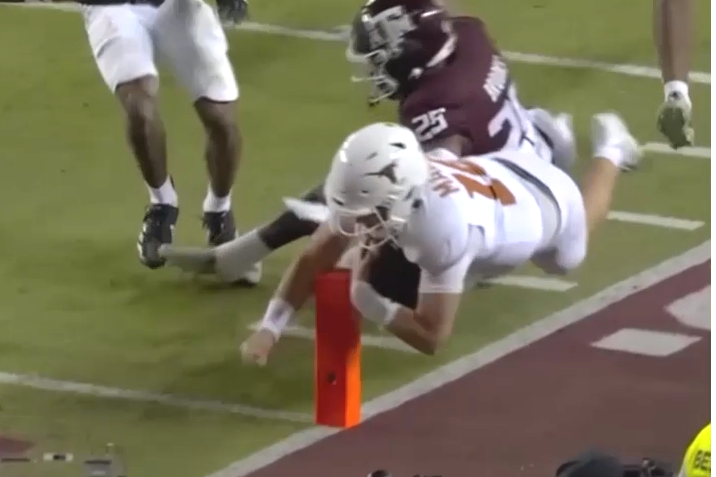
Video and image: ABC/ESPN
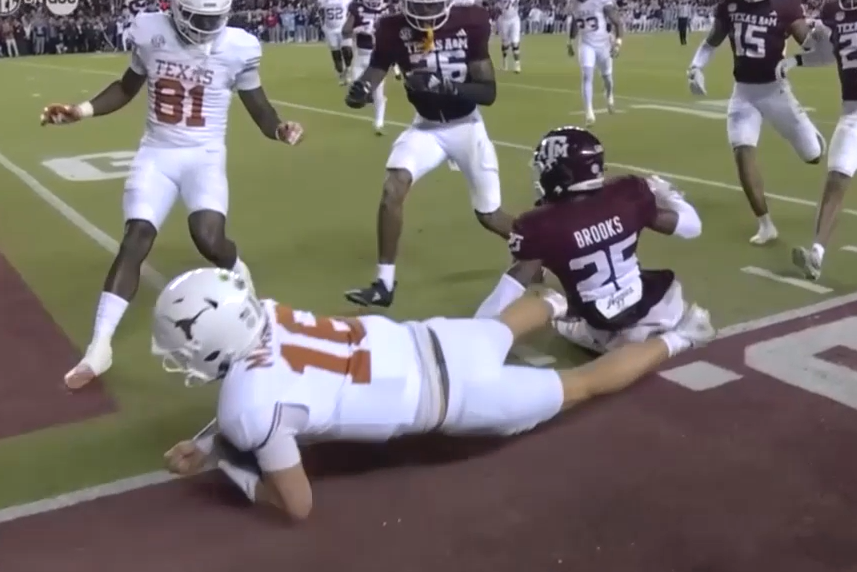
College: High-wire act
Georgia Tech’s Jamal Haynes takes a flying leap at the pylon, comes crashing down into the red paint of the sideline, and walks away with six points. We wish our screenshot was clearer, but on a field of green, Haynes is in the red. That does not matter in a break-the-plane world. It still counts for six.
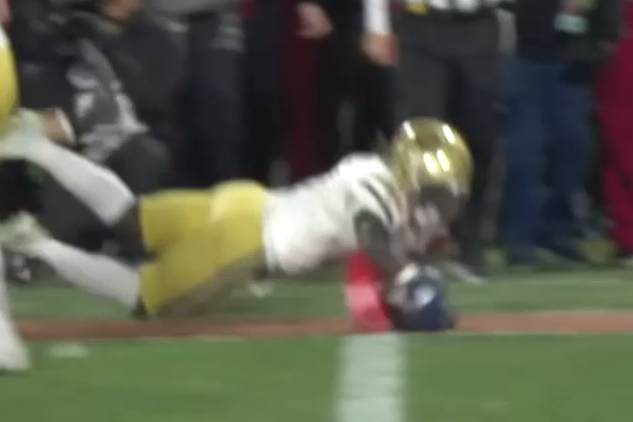
Video and image: ESPN
